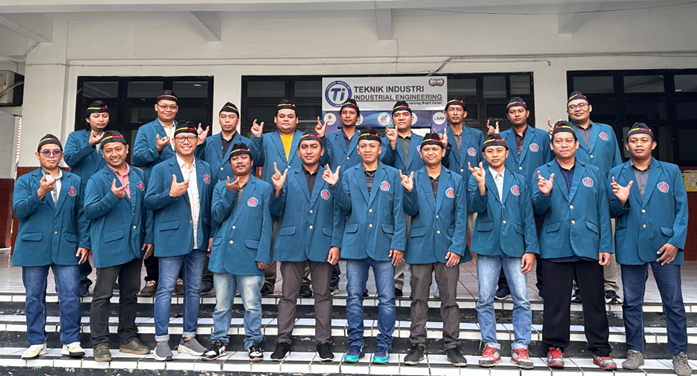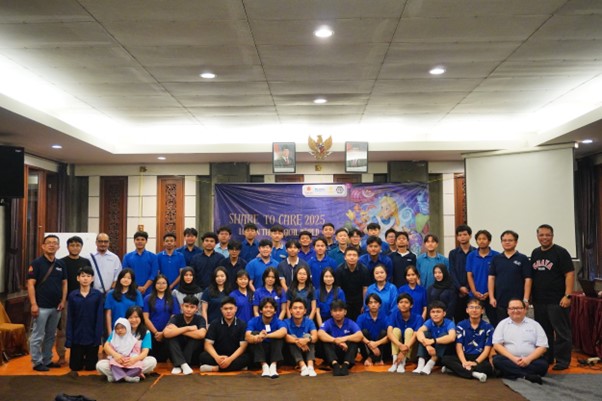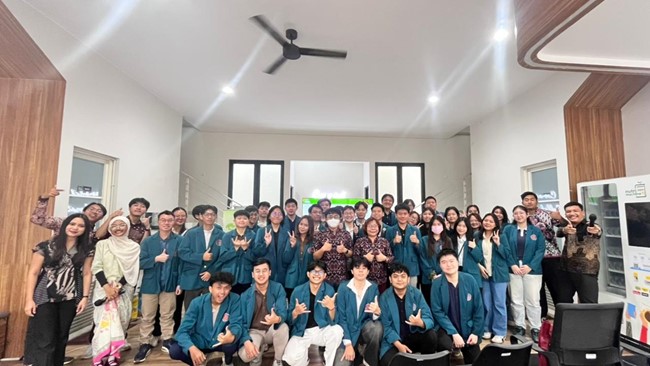Friday, (27/08/2021) University of Surabaya held a webinar series event which was attended by 37 undergraduate students/S1 and graduate students/S2 of Industrial Engineering Ubaya and also Dr. Indri Hapsari, S.T., M.T. as a lectures in Disaster Management And Logistics. The resource person of this webinar named Ms. Nadine Sulkowski, M.Sc., B.Sc., PGCHE, FHEA Lecturer of University of Gloucestershire. This webinar series discusses about Introduction of Humanitarian Logistics related activities and challenges as well as the mandate and scope of the logistics cluster.
Ms. Nadine said “basically, Humanitarian Logistics is the process of planning, implementing, and controlling the efficient, cost-effective flow and storage of goods, materials, and information from point A to point B the purpose of meeting the end beneficiary’s requirements” and also she said that logistics are the backbone of every humanitarian operation. Without logistics, we will not be able to implement a humanitarian inferention.
Ms. Nadine also asked the participants about the main criteria of successful logistics. “What things do we need to get right when planning logistics?” The conclusion of the answer from participants is efficient and effective transportation system, resources (transport, warehouse, coordination), parties involved, kind of product to distribute and the right time to distribute the product.
Ms. Nadine explained that the principal of the planning and vision of logistics system there is The Six Rights of Logistics. The first one is The Right Goods, it is related to needs in various situations and good supply. The second one is In The Right Quantities, it is related to what people needs and related to Cost to make sure the quantity as economically possible. The third one is In The Right Condition, it is related to make sure that supply goods can arrive on time from point A to point B, this can also be supported by facilities as refrigerated cars to deliver medicine. The fourth one is Delivered To The Right Place, the right place must be close to beneficiary and makes facilities easily to use. The Fifth one is At The Right Time, it is related to delivery needs or goods effectively. The sixth one is At The Right Cost, it used to ensure plan of logistics. Ms. Nadine also gave details to participant about Key Logistics Activities that is Strategic Planning, Logistics Need Assessment, Field Office Set up and Management, Setting up IT and Communications Tools, Procurement, Warehousing, Inventory and Asset Management, Transport, and Distribution. The strategic planning begin from design logistics planning by the understanding necessary. The setting up IT and communications tools, we have to assume that we know the communication go or not going to work.

In the subchapter Logistics and Supply Chain Management, Ms. Nadine said that “Logistics = supply + materials management + distribution”. She also said “supply chain management is a process which deals with the management of materials, information, and financial flows in a network consisting of suppliers, manufacturers, distributors, and customers”. Supply chain management start from Procurement to make buying item, make payment. And then, need to transport goods and control the transportation in Transport Management. And then, it storing goods in the warehouse in Warehouse Management. And the last one is distribution of the goods.
There are 5 priorities of Humanitarian Logistics. First one is Responsiveness, it is related to understanding who are beneficiary and what they need. Second one is Agility, it can mean we have increase quantity of supply, also can relocate some a warehouse when disaster occurs in order to b able to move goods to the warehouse, and it’s mean response to the situations. Third one is Reliability, the beneficiary need the reliable particular as food, medicine, and money. Fourth one is Cost, and the fifth is efficiency.

Ms. Nadine described the challenges of humanitarian logistics. First one is Unpredictability. Second one is Damage Infrastructure/limited Access. Third one is Congestion at Entry Points. Fourth one is Resource Scarcity, it’s talk about effect of all operations.
In the subchapter Bottleneck of Humanitarian Logistics, Ms. Nadine said that “Basically, Bottleneck occur when workloads arrive too quickly for the process to handle” this happened to supply chain which is too much supply but the flow of distribution is slowly or the available facilities are too few. Bottlenecks is very import to note in order to reduce cost.
About the International Context will be discussed is The Logistics Cluster and The Global Mechanism. Ms. Nadine explained that “The logistics cluster is a community of partner actively working to overcome logistics constrains and to develop and share best practices and solutions. At the global level, the logistics cluster provides strategic guidance to broaden knowledge and improve decision-making in humanitarian logistics. It also work with local governments on system-wide preparedness and contingency planning. Logistic cluster related to partners who coordinate with each other and are very responsible to logistics”.
The Logistics Emergency Team (LET) that is a partnership between the World Food Programme and some of the largest global logistics and transportation companies, developed to improve the humanitarian response to emergencies. The organization team is Agility, UPS, MAERSK, and DP WORLD.
Ms. Nadine also enlightened about the World Food Programme “before the crisis, the logistics cluster work with stakeholder to build response capacity through training and system development at the local, national, regional and international levels to establish and maintaining surge capacity and standby rosters and strengthen logistics preparedness of national actors in high risk countries. At the crisis onset, the logistics cluster activates to conduct an immediate assessment of situation identifying logistic needs and respond to the official request for cluster activation providing timely surge capacity”.
“The Logistics Operational Guide is a tool created by and for humanitarian organizations”, said Ms. Nadine . it provides thing to be a single source of best practices comprising of logistics templates, operational tools, references and guidelines logisticians operating in the field and provides a common approach for humanitarian logistics based on current best practices and share experiences because different organizations is not easy to working the templates and it helps managing supply chain and it also helps responsible planning/plan for the response. Logistics Operational Guide (LOG) is a dynamic knowledge platform based on manuals, trainings and guidance from humanitarian organizations, academia and private sector. The modified new best practices models among others is fundamental logistics, technical support guides, and response architecture.





